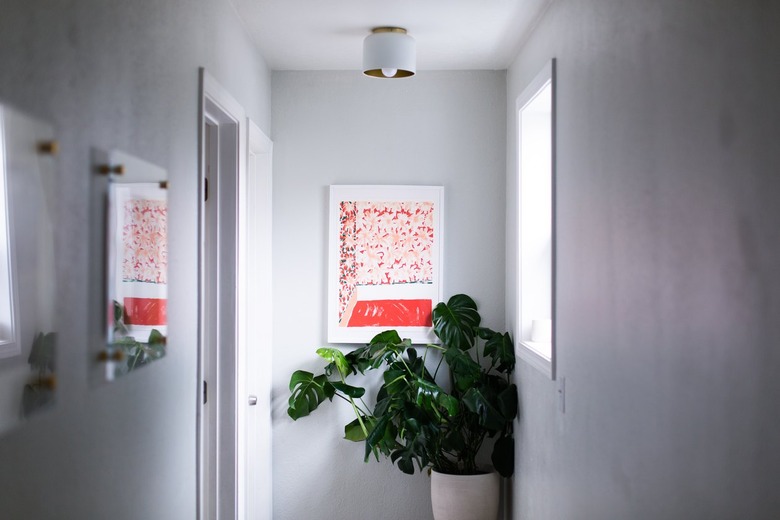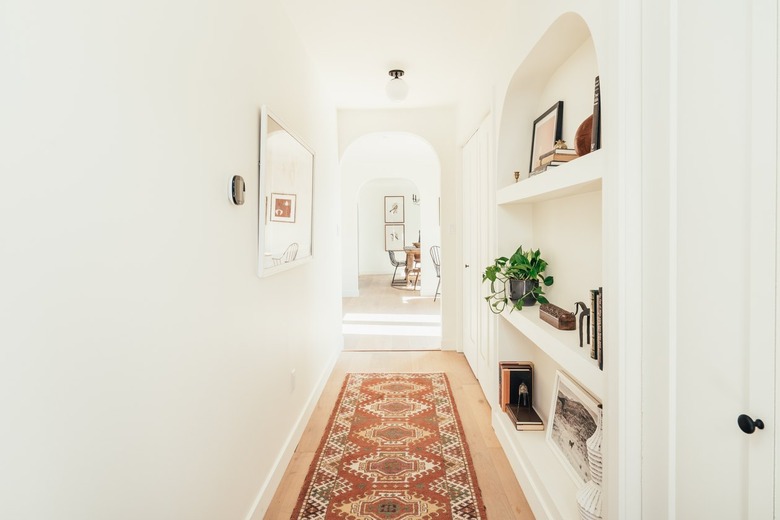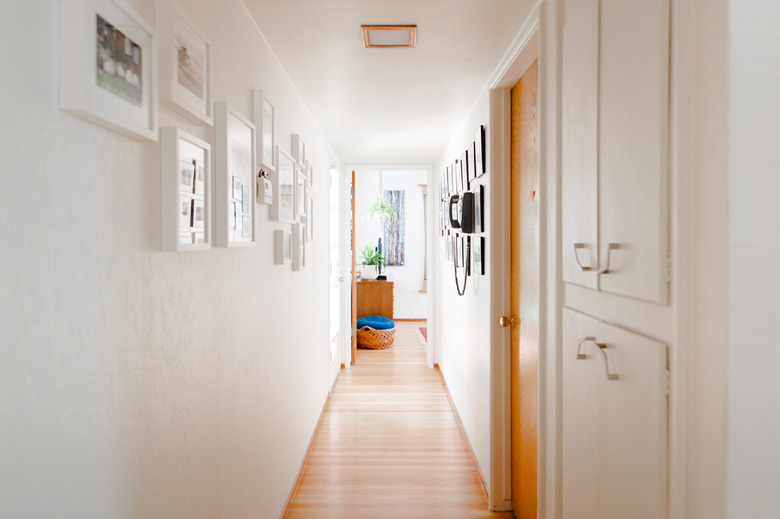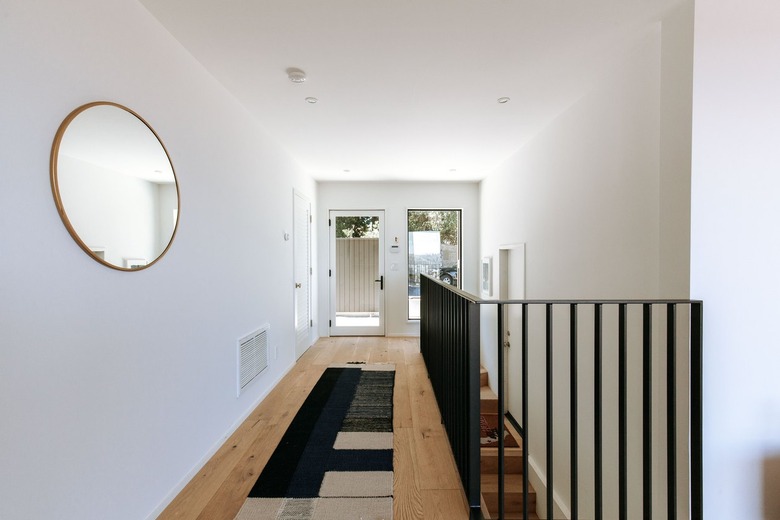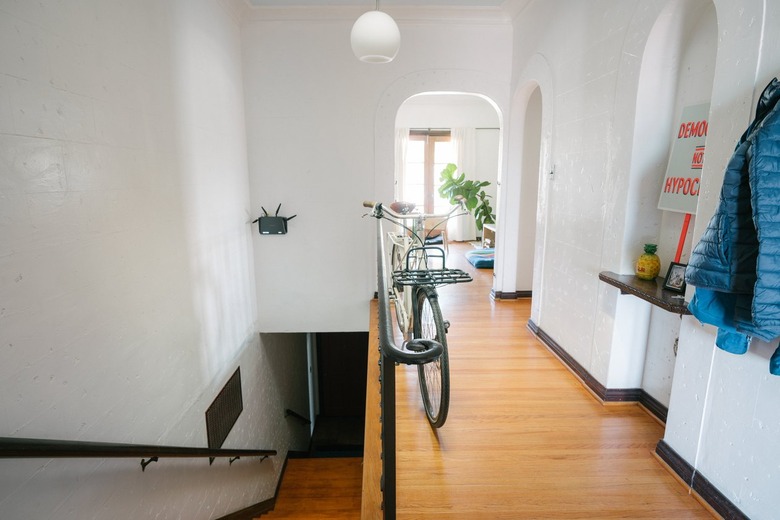How To Strategically Illuminate With Hallway Lighting Fixtures
Homeowners often put a lot of thought into creating the perfect lighting for their foyer, dining room, living room, kitchen, and bedroom, but they tend to overlook the humble hallway, which often ends up looking dark and cramped. When you spend time choosing the right hallway lighting fixtures, the space can appear airy, spacious, and inviting. Finding attractive and functional hallway and entryway lighting can be challenging, especially when these spaces are narrow or have a low ceiling. Still, with some strategic planning, your corridors can look just as eye-catching and welcoming as the rest of your home.
Types of Hallway Lighting
Most hallways are too narrow for freestanding lights or table lamps, so installing a wall or ceiling light fixture is a must, and most corridors require a combination of light sources. These types of hallway light fixtures can light your way (without getting in your way):
Hanging Lights
Chandeliers and pendant lighting are eye-catching additions to any hallway or entryway. These two hanging light options are similar, but whereas chandeliers have more than one bulb, pendant lights only have one. Though these provide serious visual impact, you should only use them in spaces with high ceilings. Ensure there is at least 7 feet of clearance beneath the bottom of the fixture or it could bonk your taller guests in the head — and make the entire hallway feel claustrophobic.
Tip
Even if you have enough vertical space, stick with a slim fixture in narrow hallways to avoid making things appear to be more cramped.
This type of wall light is an excellent option for hallways with low ceilings, and wall sconces can also be used to light up features in the hallway, like coat racks or side tables. A series of wall sconces is an elegant and understated way to light up a long hallway. One benefit of wall sconces is that unlike hallway ceiling lights, you won't need a step ladder to change the light bulbs because they're typically installed at eye level. Unfortunately, because sconces protrude from the walls, they aren't always the best option for narrow hallways, especially when designs extend out a significant distance.
Tip
Having more than 4 inches of depth on a light fixture hung below 80 inches will inhibit those who use a wheelchair from maneuvering easily around the space, so be sure you have a very slim profile on your sconces.
Recessed lighting, also known as "downlights" or "can lighting," are lights installed within the ceiling. These are one of the best options for hallways that are narrow and have a low ceiling. These simple lighting fixtures might not add much visual interest, but they don't take up a lot of space, and their minimalist appearance works with most home decor styles. Can lights may provide ambient light or may be used for accent lighting since they can be directed to a certain angle, highlighting decorative features, such as artwork or portraits.
Track lighting fixtures consist of a series of adjustable lights secured to a track installed along the ceiling or wall. They are best used as accent lighting to showcase portraits or artwork. These lights don't work with every style since they usually look modern or industrial, and they can sometimes add too much visual clutter to a small space.
A flush-mount light is a fixture that sits flush with the ceiling, whereas a semiflush-mount ceiling light is a more decorative option that extends downward a few inches or more. If you want a little more flair than recessed lighting can offer but don't have the clearance for a hanging light, these fixtures can provide attractive styling without making a space feel too confined. This type of ceiling lamp can provide sufficient illumination for smaller areas, like entryways, but for larger areas, they are best used with other lights.
How Much Light Is Enough?
It isn't easy to determine how much light is enough light in the hallway. Experts say ambient lighting in a hallway should be anywhere from 500 to 2,500 lumens. These numbers vary so much because hallways vary so dramatically; a small entryway will need less light than a long corridor connecting one side of the home to the other.
A good rule of thumb is to start with the total square footage of the hallway (multiply its length by its width in feet) and then increase that by a factor of 5 to 10. As an example, a hallway that's 120 square feet should have between 600 (120 x 5) and 1,200 (120 x 10) lumens of ambient light.
To figure out how many lumens you need, add together the total number of bulbs in all of your hallway light fixtures and then multiply this number by the lumens of the bulbs. You can buy brighter or dimmer bulbs as you prefer, but you should typically assume each bulb emits 220 to 600 lumens (the difference between a 25- and 60-watt incandescent bulb). In this example, you would need at least one fixture with a 600-lumen bulb or up to 6 fixtures, each with a 220-lumen bulb.
Strategize Your Hallway Lighting Fixtures
The strategy for hallway lighting fixtures involves layering different types of lights at different heights and brightnesses to achieve three distinct goals. Layered lighting can make any hallway both attractive and functional. The first and most important goal is ambient lighting, which means adding enough light to ensure you can safely navigate the corridor. Your ambient lighting should provide enough lumens to illuminate the space without additional light fixtures.
Next, you may want some task lighting to provide focused illumination for people to perform specific actions or functions in the area. Task lighting could involve lighting up a bookshelf so users can choose a title, lighting up a seat by the door so people can more easily put on their shoes, or lighting up a space in front of a mirror to allow guests to check their appearance.
Finally, accent lighting can add a decorative element to the space by lighting up artwork, mirrors, furniture, or portraits along the hallway. Alternatively, it could mean using colored lighting to add visual interest to the walls.
Where to Place Hallway Lights
While there's no one-size-fits-all solution for where to place your hallway light fixtures, try some of these ideas to brighten your corridor while making it look more spacious and visually appealing:
- Place one light at least every 8 feet or
closer together if you are using low-lumen
bulbs. - Attract the eye down the hall by putting one
fixture near each end if you have a longer hallway. - Install wall sconces at least 5 feet above the
floor or even higher to make the ceiling seem taller. - Place a large mirror under a light source to
reflect the light, making your space feel larger. - Arrange lighting to bring attention to at
least one focal point, such as a piece of furniture or artwork. - Use warm white bulbs in ambient and task lighting
sources to create a comfortable, welcoming environment. - Choose accent lighting colors based on the
atmosphere you want to build around that feature — maybe bright white light, warm and soft light, or colored light.
Tip
After you've placed your lights, stand at each end of the hall and look for dark spots. Lighting should be even throughout the entire hallway and shouldn't get dark between fixtures. If there are dark spots, invest in more lighting in those areas. Also, ensure any focal points or task-oriented areas have sufficient light to emphasize the features and make tasks easy to perform.
